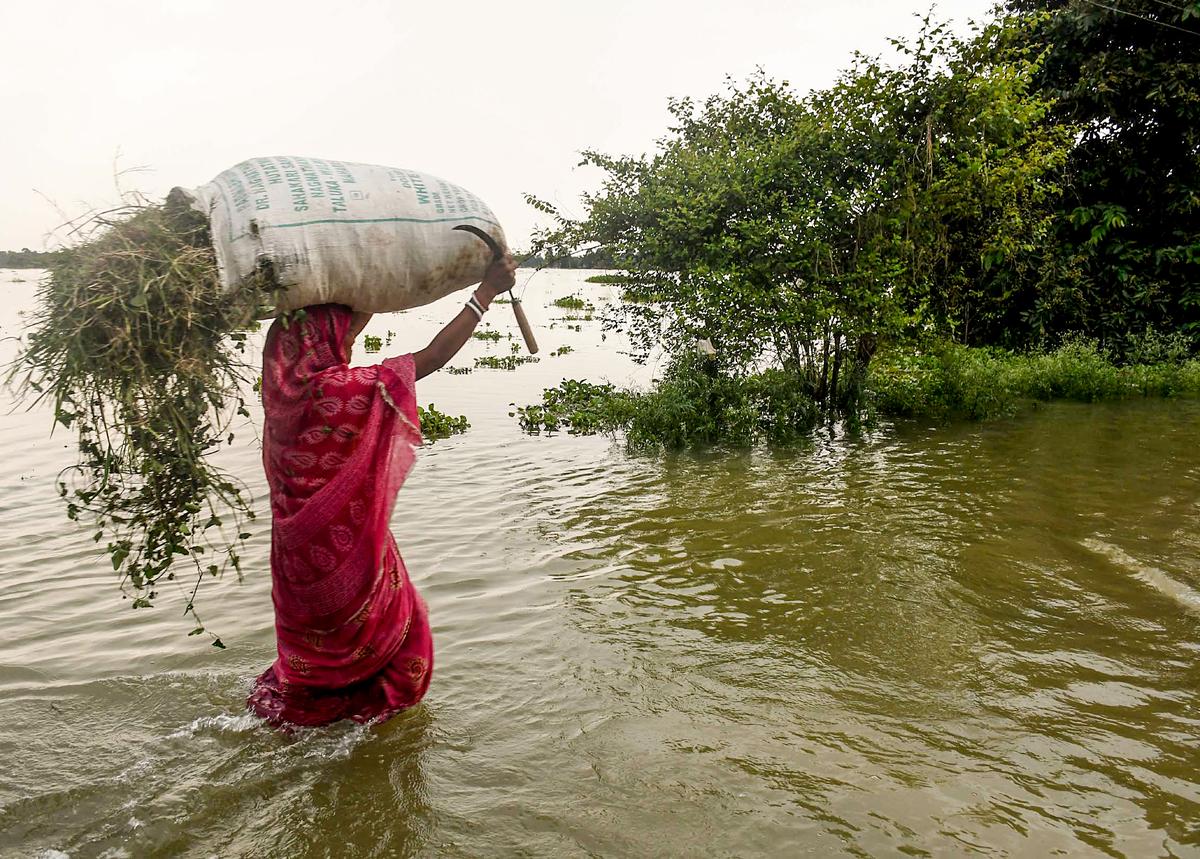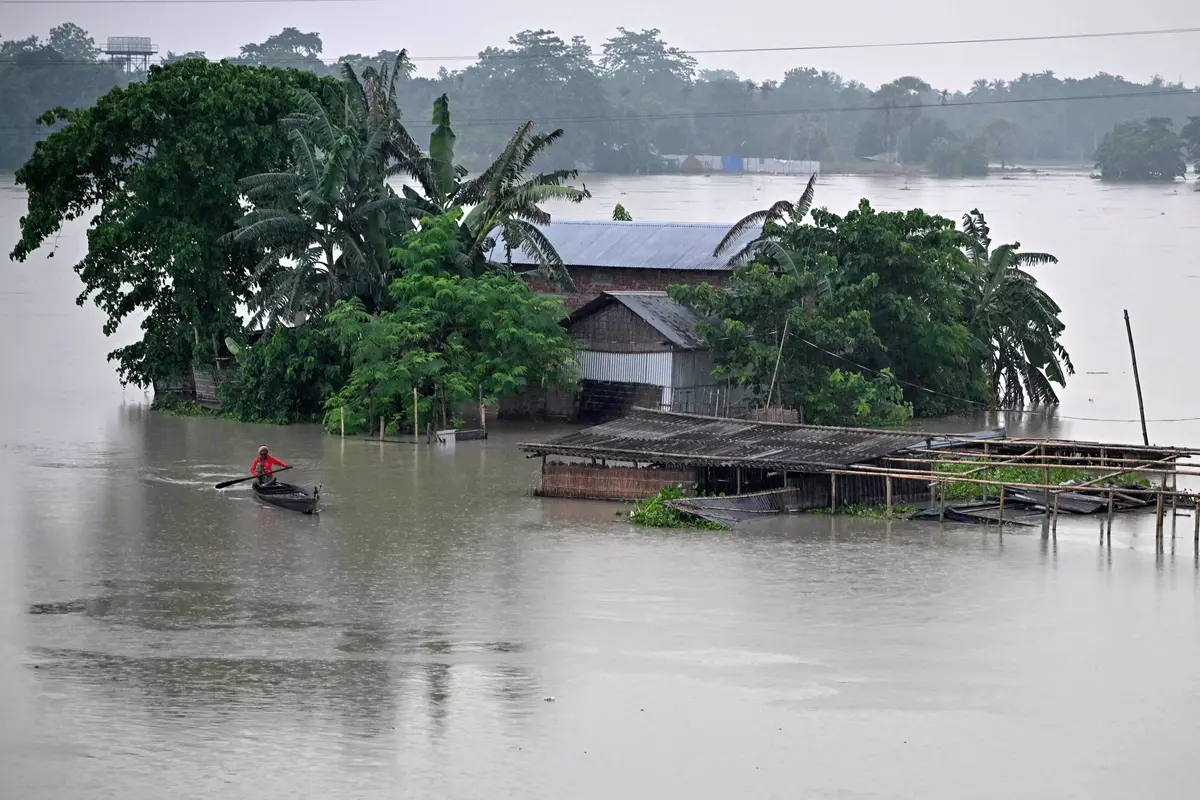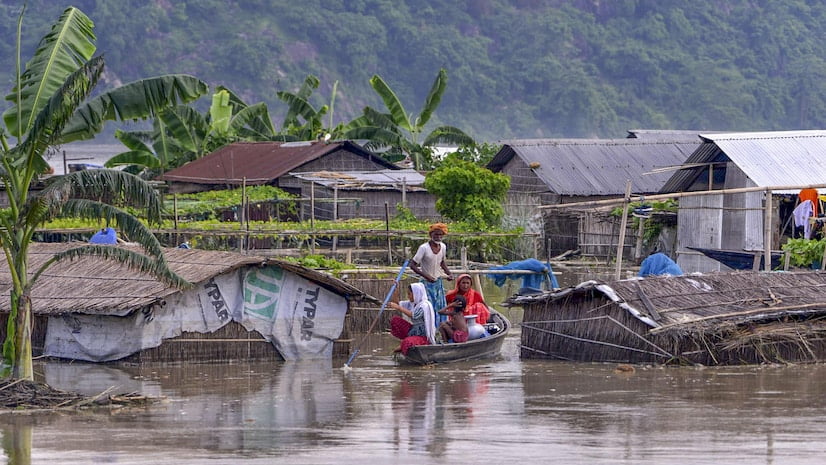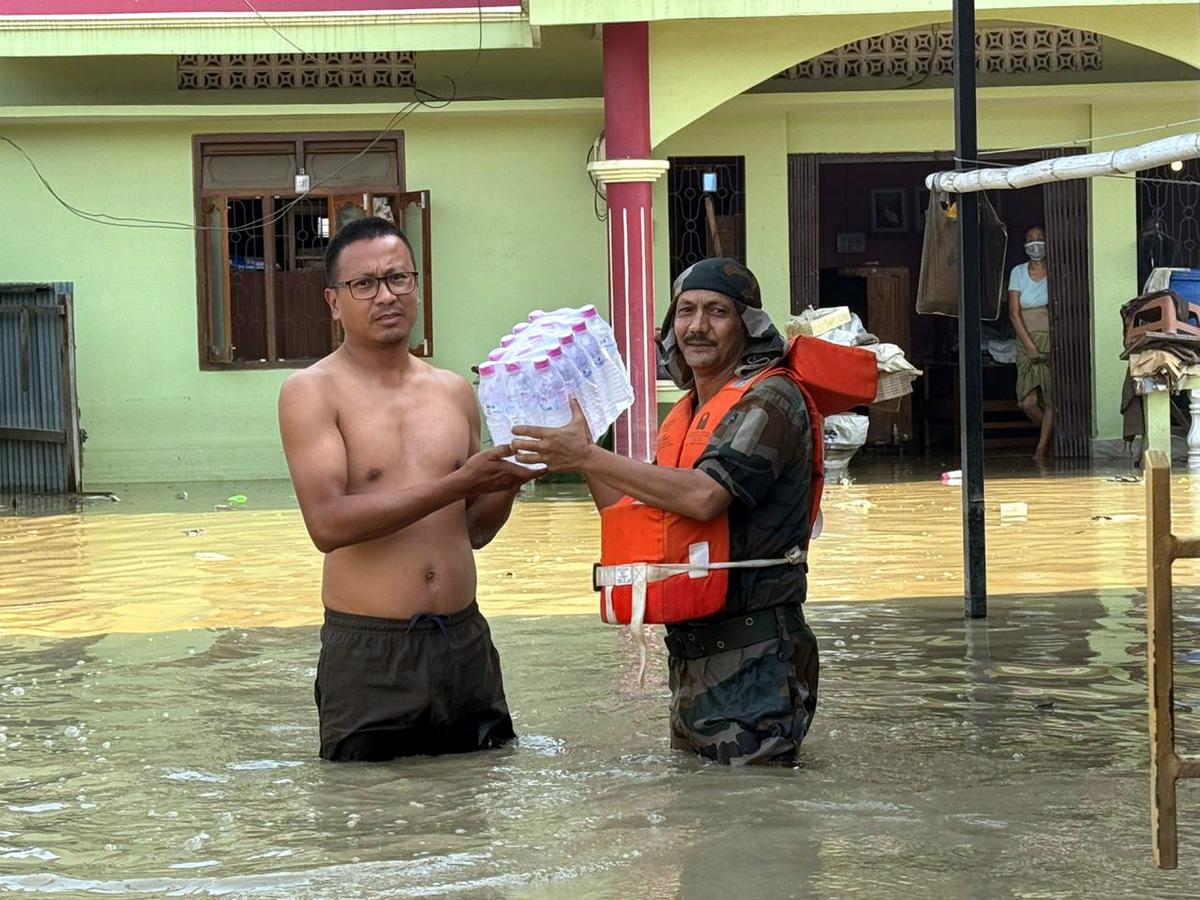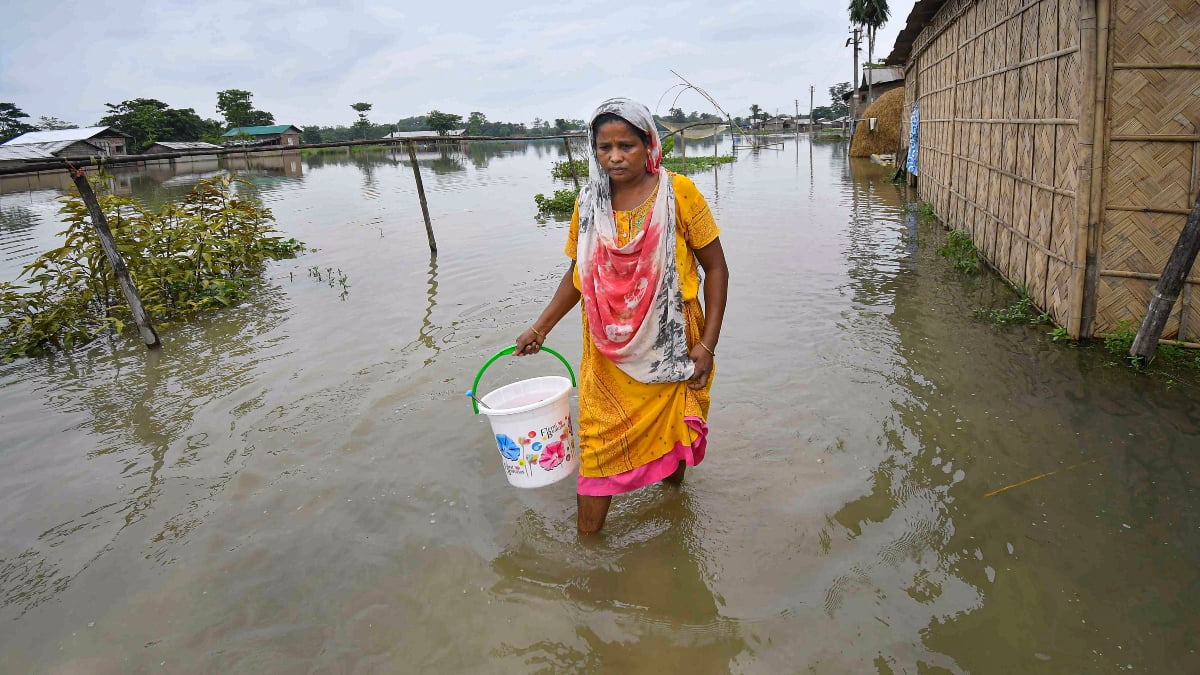Assam, as a state, is no stranger to floods. This is partly owing to its geography; since the calamitous earthquake in 1950, which significantly altered the course of the Brahmaputra river, Assam has witnessed increased flooding. However, the impact of climate change is also the most visible in the frequent and intense instances of flooding in Assam. In the past two decades, flooding has almost become an annual occurrence in the region. Alarmingly, instead of accountability from the State, flooding is being increasingly treated and accepted as the “new normal”, reflective of the State’s long standing apathy and indifference to the lives of people in the North-east.
The present situation in Assam
The floods in Assam this year have ravaged the state. The neighbouring states of Meghalaya and Arunachal Pradesh have also experienced flash floods and landslides since the onset of the monsoon this year. In Assam, the conditions continue to remain grim— as per the Assam State Disaster Management Authority, as of 10 July 2024, over 17.2 lakh people were still affected by the floods in 26 districts and the lives of 79 people were claimed by the floods. Presently, 316 relief camps and redistribution centres are active in 18 districts, serving 2,95,651 displaced people.
A major portion of the cropland, approximately 70,000 hectares, is also now inundated and unusable in the short-term.
A major portion of the cropland, approximately 70,000 hectares, is also now inundated and unusable in the short-term. The floods have also caused devastating losses to wildlife— about 159 animals in the Kaziranga National Park died due to drowning or during rescue operations.
There is little respite in that the flood water has receded in major rivers, however, rivers Brahmaputra, Burhidihing, Dikhou, Disang, Kopili, and Kushiyara continued to flow above the danger levels. Dhubri, Cachar and Sivasagar are some of the districts that have experienced the most severe damage owing to the floods. Urban districts including Kamrup (Metropolitan), Dibrugarh and Karbi Anglong have also not been spared from the devastation of the floods. This depicts that people-centred, forward-thinking urban planning that can anticipate disasters and have inbuilt solutions for them is crucial to prevent such disasters.
Despite the construction of flood mitigation infrastructure such as embankments and dams to contain the flow of the river water, the flooding in Assam persists year on year, primarily due to deforestation and the resulting soil erosion and aggravated implications of climate change. In fact, the floods this year have caused heavy losses to infrastructure as well, demolishing 94 roads, three bridges, 26 houses, and six embankments. Lurinjyoti Gogoi, President of the Assam Jatiya Parishad, commented on the urgency to find a long-term, sustainable solution to the frequent flooding in the state.
‘Assam needs a good solution to this calamity. The economic and human losses every year in Assam due to flood would exceed that of the rest of the states combined in our country.’
The marked lack of early preparedness delays the recovery from the disaster. It also allows for singular causes to have cascading implications.
The marked lack of early preparedness delays the recovery from the disaster. It also allows for singular causes to have cascading implications. For instance, the forced displacement due to floods not only endangers life but can lead to water-borne diseases. Due to limited available medical attention, the patient may not be able to access healthcare services in time, further aggravating the illness and in turn, endangering their life. Moreover, the long-term consequences of a flood on the overall lives of people become impossible to measure, given the onslaught of trauma and grief a disaster brings with it. Therefore preemptive preparation to mitigate floods and their repercussions that places Assam on the path to becoming a flood-proof state is non-negotiable.
Life during and after a flood
The impact of a flood is felt not only during the flood itself but for some time post the flood. The impact of living through a flood is well-known and documented. Almost instantaneously floods spell a spate of disease, homelessness, loss of property, trauma and food insecurity, which are all deeply interconnected. In the wake of floods, people are immediately left homeless and displaced in high numbers, because low-lying areas and areas surrounding embankments that are populated get inundated. Livestock is swept away, crop fields, granaries and plantations are submerged, making food a scarcity, thereby creating the reliance on aid packets. Roads, public utility services and infrastructure become heavily compromised, making the delivery of aid, healthcare and other services challenging.
Even after a flood recedes, life has to be built back from scratch. The threat of communicable and vector-borne diseases still looms large amidst compromised sanitation facilities, healthcare system and public infrastructure. Land remains uncultivable and livestock injured or claimed by the floods. This economic setback can have the immediate effect of malnutrition and can be definitive in determining access to future opportunities and resources, if not addressed adequately through compensation. The psychological trauma of a flood, seldom acknowledged, can have life-altering implications. Jacqueline Torti, in their article highlighting the health consequences of floods, spotlights this.
‘I strongly feel that mental health issues are not given as much attention as they deserve. For many, the emotional trauma of experiencing a flood is overwhelming. Thousands of individuals have to relocate, often residing in government shelters, leading to a diminished sense of place and attachment, along with a loss of self–identity.’
It is abundantly clear so far that the floods in Assam cannot be treated with nonchalance or levity that they have been treated with so far. This then warrants the question, has anything been done yet and what is the way forward?
Measures taken by the Government of Assam and what is yet to be accomplished
Much of the work undertaken by the Government of Assam towards flood prevention is focused on short-term, immediate measures and nothing substantive has been practised to prevent and protect against floods in the long term. The infrastructural measures implemented, particularly in the Brahmaputra, are also ineffective as they did not align with the river’s floodplain. It is noteworthy that there has been prevailing scepticism regarding the flood-preventing ability of dams and embankments in rivers like the Brahmaputra whose tides consistently decay water-containing structures. The ‘EPIC Response Framework’ is a very useful guideline for governments to manage floods comprehensively and holistically. Adapting this framework to the context of floods in Assam will help the government make evidence-based, data-driven decisions.
The ‘EPIC Response Framework’ is a very useful guideline for governments to manage floods comprehensively and holistically.
The ‘E’ in EPIC stands for ‘Enable’. This plan operates with the premise that for any flood management approach to be effective, it has to be systemic. This means harnessing the knowledge and experiences of communities in designing solutions and supporting them in taking the lead for transformative change. For instance, the Intermediate Technology Development Group–Bangladesh, worked with the flood-affected communities in Bangladesh to develop an improved housing model that can withstand the floods. This, supplemented with uniform National and state-level policies and strategies can be significant in enabling states to respond proactively to flooding.
The ‘P’ in EPIC represents ‘Plan’. The importance of flood risk mitigation and contingency planning is undeniable in strengthening the ability of states to respond to floods. This must include specific and measurable goals, tactics to achieve them, details of resources available, deployment of resources, timelines for the action items and details of persons accountable, among other relevant information. The Assam Cabinet, in 2022, mandated each department to devote 3% of its yearly budget to a disaster risk reduction plan. Potential action items in this plan could be constructing areas at high elevations for the safekeeping of animals at the Kaziranga National Park, boosting the construction of high-altitude housing for residents. The contingency measures must encompass asset protection practices that compensate people for assets lost to the floods and support them in rebuilding their lives.
The ‘I’ in EPIC refers to ‘Invest’. Encouraging healthy watershed practices and water resources infrastructure could be pivotal in rivers not breaching their banks, which is made possible through adequate financial infusion. Closely related, is the ‘C’ in the acronym, referring to ‘Control’. Controlling floodplain management and water allocation helps communities become more responsive and resilient to floods. This too, requires the direct involvement of communities who can carry out advocacy, capacity-building activities and collectivise during times of distress.
The ASDMA has also opened up the process of public consultations by inviting insights, datasets and ideas on flood management in their office. Another important component of floodplain management is flood forecasting. Close monitoring of potential flood situations can help initiate early warning signals and mitigate the ultimate damage through efficient evacuation and emergency service provision.
The ‘response’ refers to the continuous process of flood, monitoring, response and recovery, which must be actioned at the time a flood has struck.
The ‘response’ refers to the continuous process of flood, monitoring, response and recovery, which must be actioned at the time a flood has struck. The Government of Assam is now testing the Intelligent Data Ecosystem for Assam – Flood Response and Management (IDEA-FRM) which can help the government make data-driven, evidence-based decisions regarding flood response, recovery and mitigation in near real-time, highlighting the increasing relevance of technology in disaster management.
It is worth noting here that the success of any such disaster management framework highly benefits from the synergy between global communities, donors, NGOs and local communities. Any initiative that impacts the lives of people must not adopt a top-down approach, but rather a bottom-up approach that builds on existing knowledge, expertise and resources, making their best use. Flood management must also not be siloed from other development goals of reducing poverty, provision of decent jobs and achieving good health, and its intersectional impact must be evaluated. This is best summarised by Professor Fiona Williamson,
‘To truly create a flood-proof society, communities must improve housing, move people out of flood-prone areas, re-design cities, promote community awareness and responsiveness, and move people out of poverty.’
About the author(s)
Abhinaya Sridhar is an undergraduate student of English literature. She enjoys documenting her personal experiences and opinions and occasionally indulges in writing fiction. She is a creature of habit and can be found listening to the same classical songs on loop or cooking up a storm in the kitchen. She can be found on Instagram
